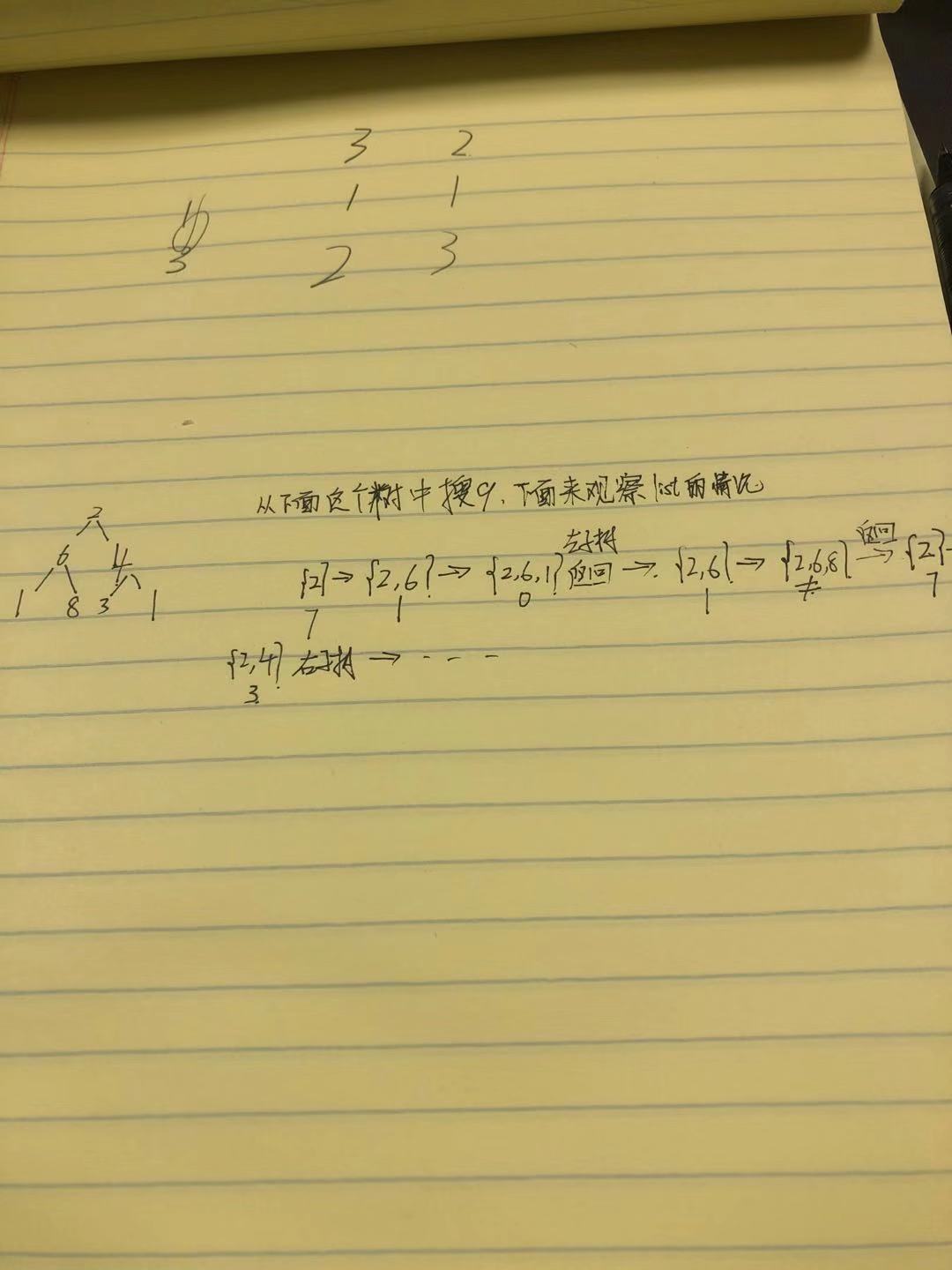Problem:
输入一个矩阵,按照从外向里以顺时针的顺序依次打印出每一个数字,例如,如果输入如下4 X 4矩阵: 1 2 3 4 5 6 7 8 9 10 11 12 13 14 15 16 则依次打印出数字1,2,3,4,8,12,16,15,14,13,9,5,6,7,11,10.
Intuition:
这一题总体思路很好定。要顺时针打印矩阵,我们不难发现每次打印的都是矩阵的外框,这个外框每打印一次就往里缩一圈。那么我们用r1,r2来表示外框的行数范围,c1,c2来表示外框的列数范围,然后顺时针进行打印就可以了。需要注意的是特殊情况。如果行数为奇数,那么横着打印的部分在最后一次只有从左到右的一次,而没有从右到左的一次。如果列数为奇数,那么竖着打印的部分在最后一次只有从上到下的那一次。
Solution:
1
2
3
4
5
6
7
8
9
10
11
12
13
14
15
16
17
18
19
20
| public class CodingInterview_028 {
public ArrayList<Integer> printMatrix(int[][] matrix) {
ArrayList<Integer> ret = new ArrayList<>();
int r1 = 0, r2 = matrix.length - 1, c1 = 0, c2 = matrix[0].length - 1;
while (r1 <= r2 && c1 <= c2) {
for (int i = c1; i <= c2; i++)
ret.add(matrix[r1][i]);
for (int i = r1 + 1; i <= r2; i++)
ret.add(matrix[i][c2]);
if (r1 != r2)
for (int i = c2 - 1; i >= c1; i--)
ret.add(matrix[r2][i]);
if (c1 != c2)
for (int i = r2 - 1; i > r1; i--)
ret.add(matrix[i][c1]);
r1++; r2--; c1++; c2--;
}
return ret;
}
}
|
